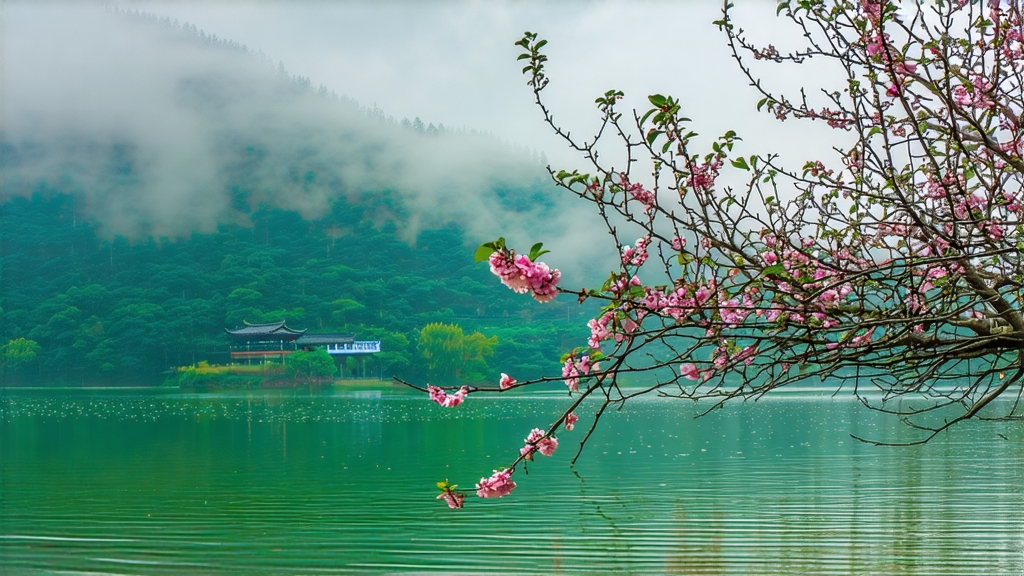
Biluochun, whose name translates literally to “Green Snail Spring,” is one of China’s ten most celebrated teas, yet it remains a quiet miracle even inside the country. Grown on the mist-lapped peninsulas of Lake Tai in Jiangsu province, this green tea is less a beverage than a captured season: the first shiver of March, the perfume of wild fruit trees, and the mineral breath of an ancient lagoon. To international drinkers accustomed to the vegetal punch of sencha or the nutty sweetness of long jing, Biluochun offers a different grammar of taste—delicate, floral, almost aquatic—whose story begins in the late seventeenth century and continues in the hands of farmers who still judge leaf quality by the squeak it makes between finger and thumb.
Historical whispers
Local chronicles credit a tea-picking nun named Bi Luo for noticing that the tiny shoots she plucked beside Dongting Mountain curled naturally into spirals when lightly warmed. Monks at the nearby Temple of Water and Moon refined the firing technique, and by the Kangxi Emperor’s reign (1662-1722) the tea had entered tribute status. Legend claims the emperor, visiting Suzhou incognito, found the infusion so fragrant that he changed its original name “Xia Sha Ren Xiang” (literally “scary fragrance”) to the more elegant “Biluochun.” Whether apocryphal or not, the tale underlines two enduring traits: an aroma so intense it startled even jaded courtiers, and an imperial seal that elevated a humble lakeside leaf into national lore.
Micro-terroir: one lake, two mountains, countless microcliffs
Lake Tai, the third-largest freshwater body in China, acts as a thermal regulator. Morning mist rises, cooling the air, while the limestone substrate drains quickly, stressing bushes into concentrating sugars. The two dominant peaks—Dongting East and Dongting West—are not true mountains but steep limestone islands covered in peach, plum, and loquat trees. These fruit blossoms bloom at the exact moment tea bushes flush, and their nectar becomes an invisible glaze on the nascent leaf. Scientists analyzing Biluochun’s volatile compounds consistently find unusually high levels of geraniol and linalool, the same molecules that give rose and peach their perfume. Thus the “mountain-fruit-tea” polyculture is not romantic decoration; it is biochemical terroir.
Cultivar architecture
Although any Camellia sinensis var. sinensis plant can be forced into a spiral, only three clonal lines are considered orthodox: Dongting Small-Leaf, Fuding Da-Bai, and the newer Wuxi Ou-Ye. Dongting Small-Leaf, grown on its namesake island, yields the smallest shoots—one bud plus an unfurling leaf barely 1.5 cm long—yet packs the highest amino-acid count, delivering the famed umami-sweet broth. Fuding Da-Bai, transplanted from northern Fujian, offers a broader leaf and thicker cuticle, giving export-grade Biluochun the durability needed for transoceanic travel. Wuxi Ou-Ye, developed in the 1980s, is frost-resistant and extends the picking window by ten crucial days, ensuring farmers can meet global demand without harvesting in rain, a practice that ruins the curl.
The choreography of picking
Official standards allow only twenty days of harvest, beginning when lake water temperature holds steady at 10 °C, usually between the Qingming and Grain Rain solar terms. Pickers, 70 % of whom are women between 40 and 65 years old, work in pairs: one climbs the terraced bush like a squirrel, snipping the apical two millimeters with fingernails kept deliberately long; the partner waits below with a bamboo “flower basket” lined with nettle cloth. Speed is critical—buds oxidize within ninety minutes—but so is gentleness; any bruise darkens during firing and breaks the spiral. A master picker’s daily haul is barely 500 g of fresh leaf, which shrinks to 100 g finished tea, explaining why top-grade Biluochun retails for more than silver by weight.
Kill-green: the sixty-second waltz
Within thirty minutes of plucking, the baskets are slid onto woven reed trays and carried to the village kill-green shed. Here, the leaves meet the “three-bend pan”: a cast-iron wok tilted 30°, heated by fruit-wood embers to 180 °C. The master, always a man in local lore, tosses 150 g of leaf in a clockwise arc,